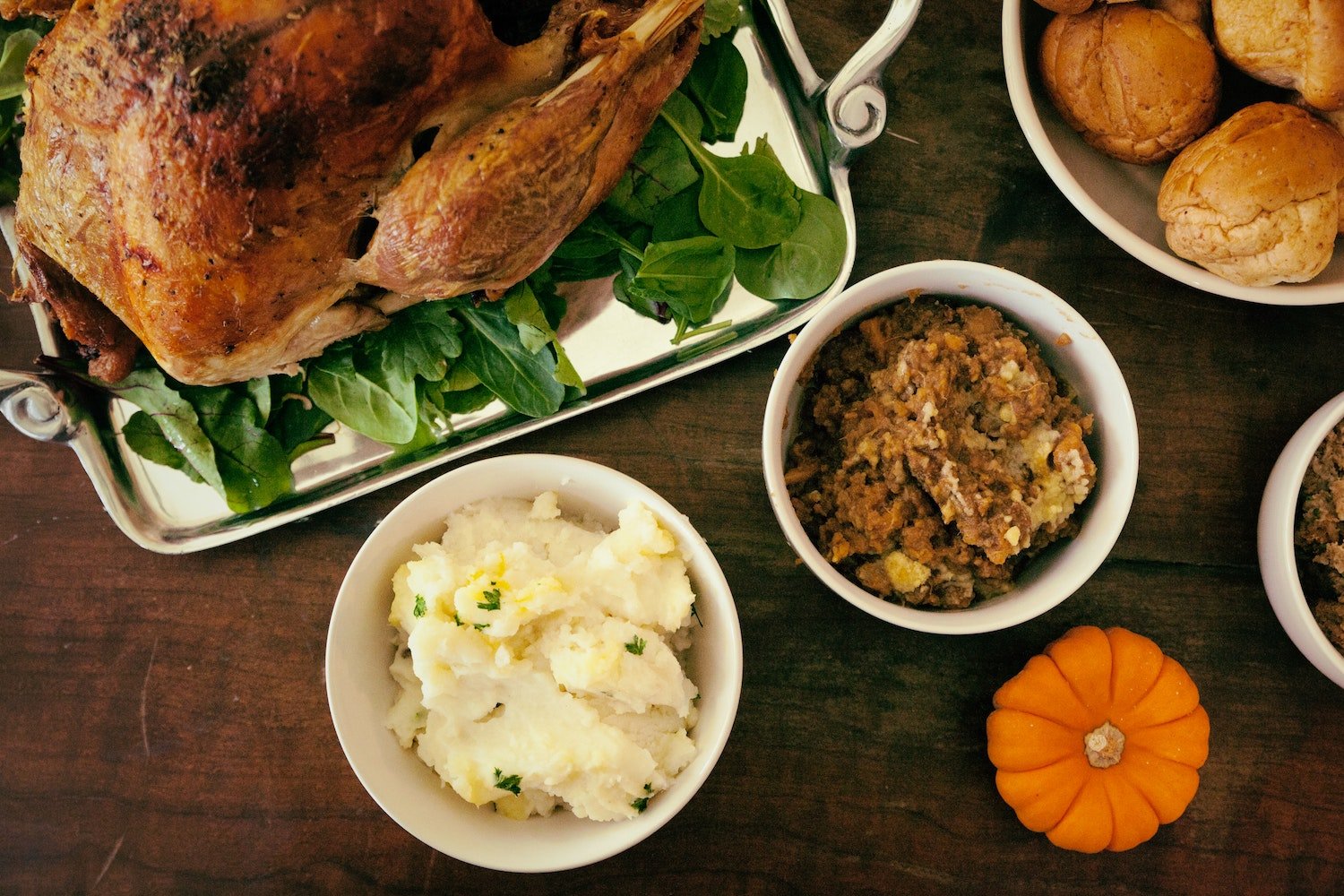Let's Talk Turkey
/I grew up in a house with hunters. Thanksgiving for them meant duck season. For the life of me I could never understand getting up at 4:00 a.m. to freeze your buns off in a duck blind. Once as a small child and the third daughter in my family, my father felt it would be good for me to experience such a morning. It was my one and only. Don’t get me wrong – I’m a nature girl at heart and love the outdoors, but guns are not my thing or killing wildlife.
Turkey, a Thanksgiving staple so ubiquitous it has become all but synonymous with the holiday is still an enigma to me. The hunting season for turkeys is in the spring and Thanksgiving, the grandest of all turkey seasons is in November. Nearly 90 percent of Americans eat the big bird – roasted, baked, or deep-fried on Thanksgiving along with various other dishes including rice, gravy, mashed potatoes, squash, green beans, stuffing/dressing, cranberries, oyster pie, sweet potato pie, pumpkin pie, pecan pie, and an assortment of other dishes. There is no indication that turkey was served at that first Thanksgiving in 1621. For meat, the Native Americans brought venison which would make a heck of a lot more sense. Deer season is in the fall!
My husband, Sandy, loves to turkey hunt. When the season opens each year, it occupies his time until the spring hatch lures him back to the river for fly fishing. There is no doubt about it, I married an outdoor sportsman; he migrates from fishing to hunting and never tires of either one. There was a time when we used to dance. I thought he enjoyed holding me in his arms and whispering sweet nothings in my ear. Now I just hear, “the music is too loud. The dance floor is crowded. This one is too fast. Are you ready to leave?”
Pine cone turkey decorations … with feathers of thanks.
There is a lot more to Thanksgiving than hand print turkeys and a smorgasbord of food. Chances are the lessons you learned in elementary school involved a fast friendship between pilgrims and Indians and the bountiful meal they shared. Contrary to popular belief, this was no potluck dinner where the Native Americans brought the turkey. But there was a gathering and they did share a meal together according to the journal of William Bradford, the first governor of Plymouth, Massachusetts. Bradford writes that in 1620, the Mayflower brought Pilgrims to Plymouth Rock where they established a colony. After a bountiful harvest the following year, they decided to give thanks for the food with a three day celebration.
Thanksgiving as we know it today did not become well known until Bradford’s journal was discovered and published by Sarah Josepha Hale, a magazine editor, in the early 1800’s.
Hale was so taken with the story of the first Thanksgiving that for 36 years she lobbied five U.S. Presidents to make it a national holiday, earning her the nickname of “Mother of Thanksgiving.” It wasn’t until 1863, at the height of the Civil War, that President Abraham Lincoln proclaimed Thanksgiving an official holiday in North America; a step towards reuniting the country and healing the wounds of civil strife.
Missy Schenck with her grandson Phen.
Lincoln scheduled Thanksgiving for the final Thursday in November and it was celebrated on that day every year until 1939 when President Franklin D. Roosevelt moved the holiday up a week in an attempt to spur retail sales during the Great Depression. Roosevelt’s plan was met with great opposition and in 1941 he signed a bill making Thanksgiving the fourth Thursday in November. Marked by a traditional meal including turkey, the holiday commemorates the First Thanksgiving celebrated by the Pilgrims in 1621.
Much of the early religious significance of Thanksgiving has been lost and it now centers on cooking and sharing a bountiful meal with family and friends. Over the years most families have developed some traditions associated with Turkey Day, from the food served to the pre and post feast activities. My personal favorite is the pine cone turkey with colored construction paper feathers. Every guest writes something they are thankful for on a feather and places it in one of the pine cones lined up on the dining room table. As we circle up to bless the meal, one by one, each individual takes a feather and reads it. From the hands and hearts of all, words of thanks are spoken. It is always a moment of laughter and tears, but most of all, it is a time to count our blessings and feel more grateful than ever.
Happy Turkey Day all!






